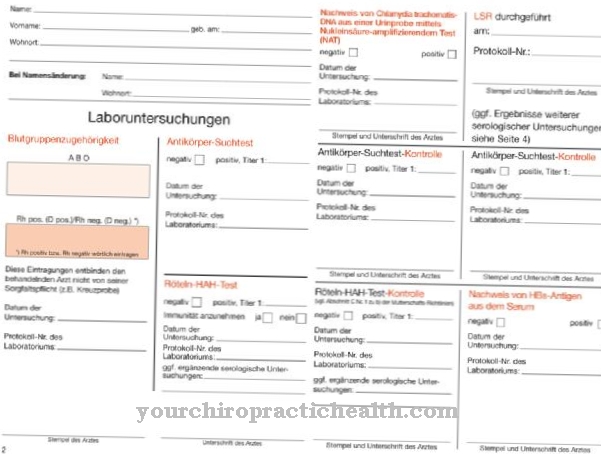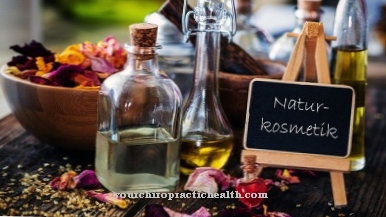One of the most common complaints is caused by diseases of the gallbladder and biliary tract. In general, more women suffer from these conditions than men. The first pain usually shows up during or shortly after pregnancy. In this case, the limited space and the high metabolic stress on the liver play an essential role. Often it is also inflammation that occurs due to bacterial infestation of the gallbladder or a viral disease of the liver (hepatitis epidemica).
Bile & Gallbladder Disorders

The formation of stones in the gallbladder also causes severe pain. Living beings, medically called lambliae, which live as parasites in the gallbladder, can also cause considerable symptoms.
By probing the small intestine with the help of a thin rubber tube, one can determine whether bacteria or parasites are contained in the bile and whether the reflex activity of the gallbladder is present. Many patients are afraid of this examination, but the fear is unfounded, as the gag reflex can easily be overcome with the help of an experienced doctor.
There are also remedies that can minimize the gag reflex. This diagnosis is very important for the doctor because he must precisely identify the causes of the disease in order to be able to establish an appropriate treatment and diet.
When the gallbladder is diseased, the release of bile juices into the duodenum is reduced. Bile juice is absolutely necessary for proper digestion, because the bile emulsifies the fats and in this way facilitates the action of the active substances (ferments) in the intestine.
The chemical splitting of the fats takes place, which in this form are absorbed by the intestinal wall (absorption). If there is too little bile in the small intestine due to gallbladder disease, fat digestion must be disturbed.
This explains the aversion to fats, which have a double disadvantage for the biliary patient. They cause pain to the sensitive organ and overload the intestine with substances that it cannot get because of poor absorption.
Often violent diarrhea or constipation develop in the course of a biliary disease, which can alternate with one another. As already mentioned, the diet for bilious patients depends on the respective diagnosis. It is therefore necessary to consult the doctor for any biliary disease.
Biliary colic is a very common phenomenon. These are attacks of pain that are based on a violent convulsive state in the duct of the gallbladder. In such a case, the first thing to do is to completely immobilize the diseased organ.
That means avoiding fats and proteins, which also irritate the gall bladder, as well as cabbage, beans, lentils and onions because of their high content of cellulose and essential oils. After a colic, you shouldn't eat anything for the first three days if possible, but only drink irritant-relieving liquids such as tea.
Diet & nutrition for gallbladder disease
Peppermint tea, unsweetened or mixed with glucose, has a particularly beneficial effect. After one or two days without solid food, you can start with a diet that primarily consists of carbohydrates, that is, starches.
Oat and wholemeal flours in soup and porridge form are particularly suitable for this. It is not necessary to only use white flour or white bread, rusks and similar gentle foods, on the contrary, it must be pointed out again and again that the body's vitamin and mineral requirements must be met in the diet.
After a few days, milk and raw butter can be added to these soups in small amounts. You can find further information on the nutrition of bilious patients from our suggestions for putting together a permanent diet below.
Fat digestion
One more remark on fat digestion. Raw butter and oils can be processed particularly easily by the bile juices. They are also carriers of vitamin A and other vitamins that have a beneficial effect on the functioning of liver cells. Butter is even richer in vitamins in summer than in winter. The poor tolerance of other animal fats can be explained by their melting point. Lard and meat fats are the most difficult to tolerate.
Many patients are unclear about the tolerance of eggs. The raw or beaten egg is relatively easy to digest. However, digestibility is significantly reduced by cooking or frying. In addition, the yolk exerts a strong influence on the reflex action of the gallbladder and can thereby cause severe colic. It is recommended to stir the raw egg into the food. However, it is advisable to avoid eggs altogether during seizure periods of illness.
In general, it must be said that the digestibility of food depends on the preparation. Bile sufferers are not allowed to eat anything that comes out of the pan. Frying chemically changes the fats and makes the resulting crust particularly difficult to digest.
These nutritional principles also apply after biliary surgery. In such cases, it is especially important to eat smaller meals often, eat slowly, and chew well. The individual dishes should be finely cut and divided during preparation, because the patient's well-being depends not least on the kitchen technology and the way they eat.
Nutrition plan
After an operation there is the possibility of loosening up the diet after initially strict discipline. All bilious sufferers are warned against overeating. Appetite and real hunger is a big difference.
Suggestions for a bile diet:
1. Breakfast:
Mint tea. Also light black tea, with a little lemon or milk, sugared. Crisp bread, stale whole wheat bread, well-seasoned mixed bread or stale rolls. Some fresh butter, honey, jelly, white cheese.
2. Breakfast: Mint tea. Oat flakes, cooked or as muesli (soak one tablespoon of oat flakes the evening before in three tablespoons of cold water, pour in some milk in the morning, add sugar or sweeten with honey, add a few grated apples, possibly stir with a tablespoon of lemon juice).
Lunch and dinner:
Vegetable soups (no lentils, pea, bean soups), defatted meat broths.
Flesh: Well-boiled lean beef, veal or chicken, also grilled, not fried. Lean fish, steamed or grilled.
Vegetables: Carrots, spinach, peeled tomatoes, black salsify, asparagus, cauliflower, tender Brussels sprouts and kohlrabi. Tender green salad or cress, prepared with sunflower oil. Mashed potatoes or crumbling boiled potatoes. All pasta.
Fruit: Compotes made from apples, pears, raspberries, blueberries, strawberries, blackberries. Raw fruits: grated, crumbly apples, bananas, grapefruits, very soft, ripe pears, oranges, whipped strawberries and raspberries.
Eat in the afternoon like for breakfast. Before going to bed we recommend hot, strong mint tea again.






.jpg)





















